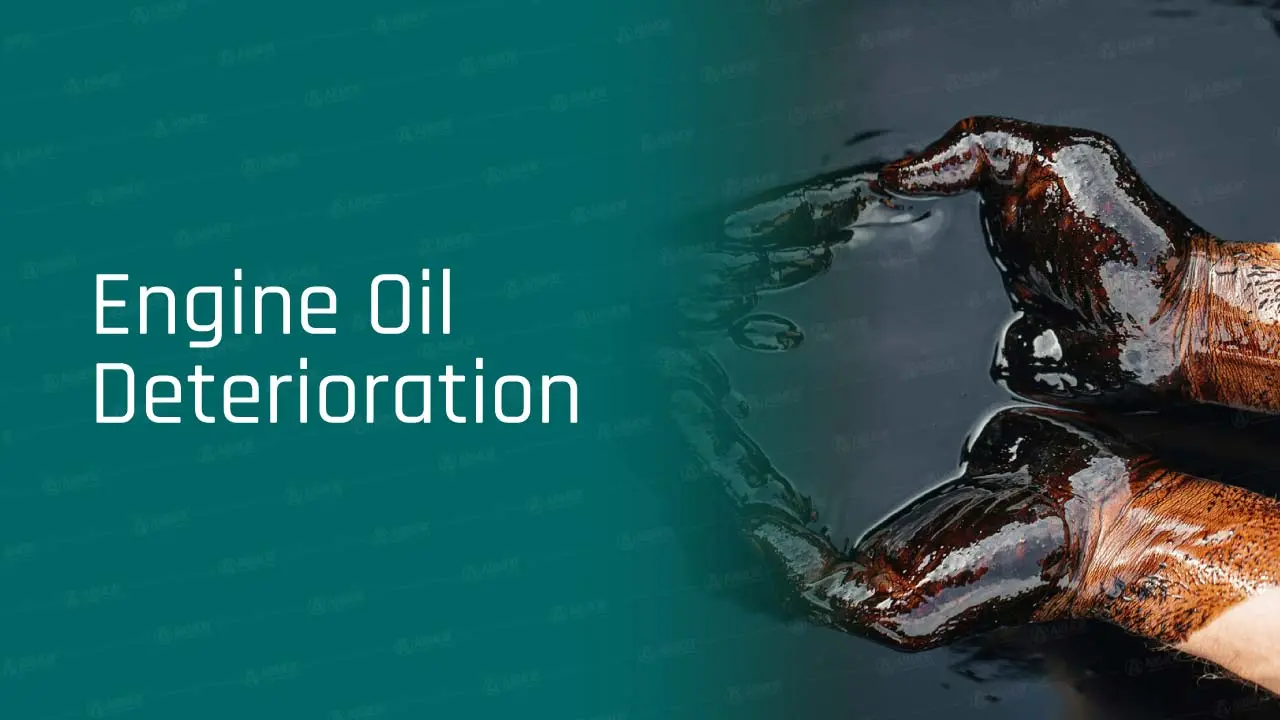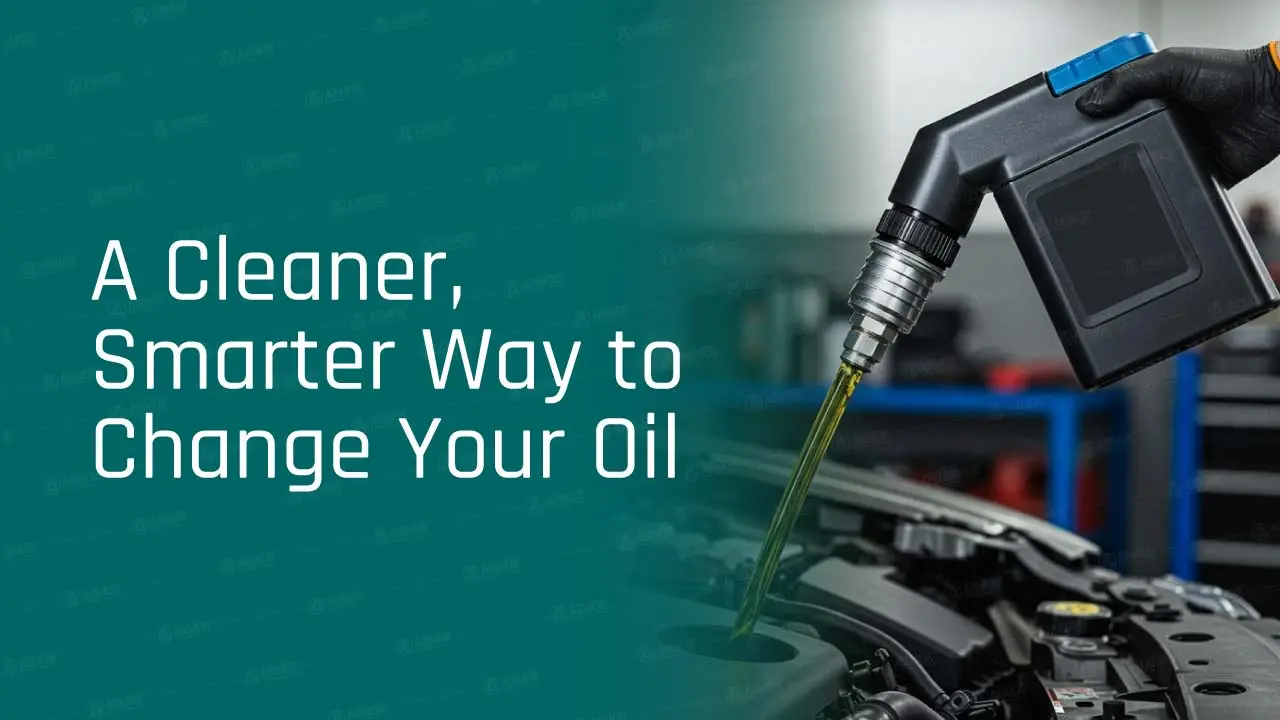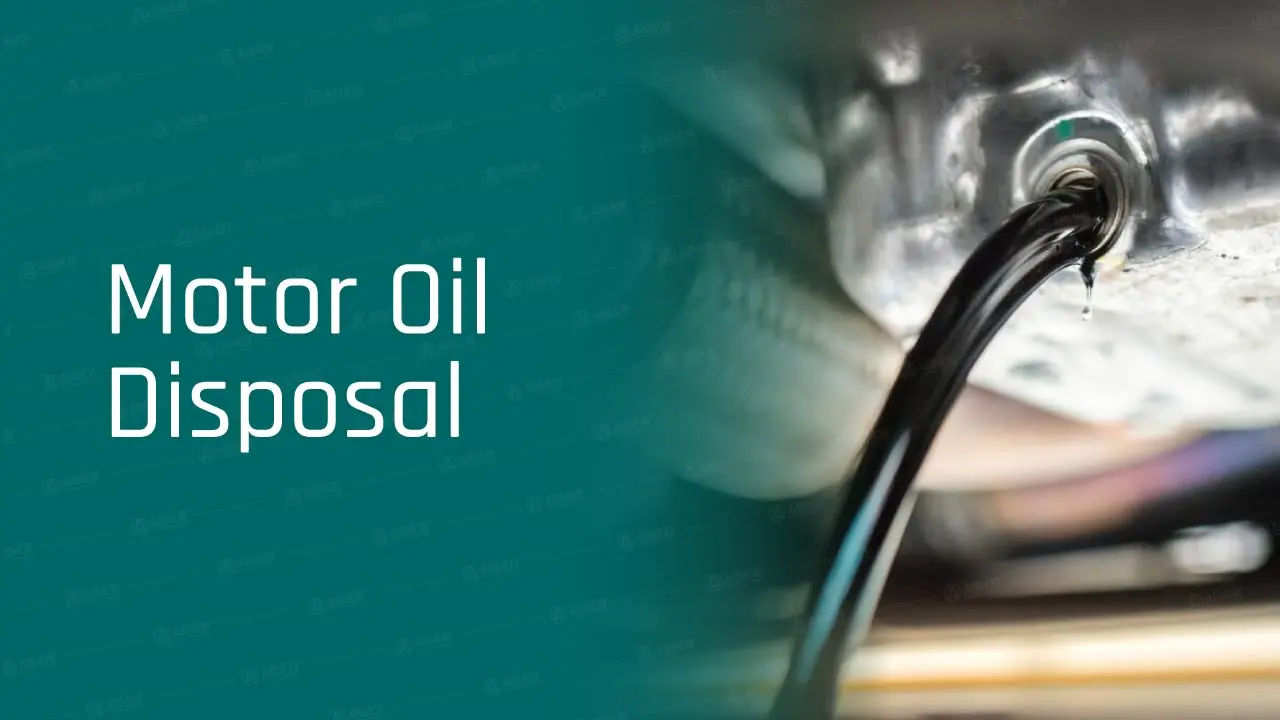- Armor Blog
- Consumer Education
- Motor Oil Deterioration Explained

Why Engine Oil Deteriorates
Have you ever wondered what happens to your motor oil between changes? It enters your engine as a clean, amber fluid. It emerges dark and depleted. Motor oil is the hardest-working component in your engine. It constantly battles extreme heat, chemical assault, and a barrage of contaminants.
This guide explores exactly why and how your motor oil breaks down. Understanding this process empowers you to protect your engine. You can extend its life and maintain peak performance. Let’s dive into the life cycle of your engine’s most vital fluid.
More Than Just Lubrication
Motor oil performs a five-pronged mission to protect your engine. While lubrication is its most famous job, it is just the beginning. The other four functions are equally critical for engine health and longevity. A failure in one area compromises all others.
Reducing Friction and Preventing Wear
The primary role of motor oil is creating a separating film. This thin film coats moving metal surfaces. It prevents direct contact between parts like piston rings and cylinder walls.1 This action minimizes friction and heat. It stops the wear and tear that leads to engine damage.
Cooling Critical Engine Components
Your car’s cooling system handles a lot of heat. However, it cannot reach every part of the engine. Motor oil cools components the coolant cannot touch. These include the crankshaft, camshafts, and pistons.2 The oil absorbs intense heat from these zones. It carries it to the oil pan to dissipate, preventing overheating.
Cleaning Away Harmful Deposits
Your engine oil is also a powerful cleaning agent. It traps harmful byproducts of combustion.
- It suspends soot and carbon particles.
- It collects tiny metallic shavings from normal wear.
- It carries these deposits to the oil filter for removal.
This cleaning action prevents the formation of sludge. It keeps vital engine passages clear and functional.
Sealing for Maximum Power and Efficiency
Motor oil plays a key role in engine sealing. It forms a gas-tight seal between the piston rings and the cylinder wall. A proper seal is vital for maintaining engine compression. It prevents combustion gases from leaking into the crankcase. This helps your engine deliver maximum power.
Protecting Against Rust and Corrosion
Finally, motor oil provides robust protection against chemical attack. It coats metal parts with a protective film. This film shields them from oxygen and moisture, which inhibits rust. Special additives also neutralize corrosive acids. These acids are formed during combustion. They would otherwise eat away at sensitive engine components.
Inside the Can: The Anatomy of Modern Motor Oil
The oil you pour into your engine is a sophisticated blend. It consists of two main parts: a base oil and an additive package. The quality of these components determines the oil’s performance and durability. Base oil makes up 70-95% of the final product.
The Foundation: Understanding Base Oils
All motor oil begins as a base oil. The journey from raw material to a refined lubricant is a complex one. The quality of this base stock is the foundation for engine protection.
How is Motor Oil Produced? From Crude to Refined Base Stock
The process starts with raw crude oil. The crude oil is heated in a furnace. It is then pumped into a tall distillation tower. Inside this tower, the heated oil separates into different components, or fractions. Lighter fuels like gasoline rise to the top. Heavier fractions used for lubricating oils settle at the bottom.
These heavier fractions undergo further processing to improve their quality. A key process is hydrocracking. It uses heat, pressure, hydrogen, and a catalyst. This breaks down large, impure molecules into smaller, more stable ones. The result is a purer, higher-quality base oil with better stability.
Synthetic vs. Conventional Motor Oil: The Critical Stability Difference
The refining process creates a major difference between oil types. Conventional motor oil is refined directly from crude. This leaves behind natural impurities and irregularly shaped molecules. These factors make it less chemically stable and more likely to break down under stress.
Synthetic motor oil is different. It is either built from the ground up in a lab or subjected to a much more severe refining process. This engineering creates molecules that are uniform in size and shape. It also removes nearly all impurities.15 This purity and uniformity give
synthetic oil superior chemical stability. It resists breakdown from heat and oxidation much better than conventional oil. This allows it to protect your engine for far longer.
| Characteristic | Conventional Oil | Synthetic Oil |
| Origin | Refined from crude oil. | Chemically engineered or severely refined. |
| Molecular Structure | Irregular, varied sizes. | Uniform size and shape. |
| Purity | Contains natural impurities (e.g., sulfur) | Highly pure, impurities removed. |
| Thermal Stability | Less stable; breaks down faster under heat. | Highly stable; resists heat and oxidation. |
| Cold-Flow Performance | Thicker in cold; can lead to oil gelling. | Flows well in extreme cold for better startup protection. |
| Typical Service Life | 3,000–5,000 miles. | 7,500–15,000+ miles. |
The Power of the Additive Package
Base oil alone cannot handle the demands of a modern engine. A carefully balanced additive package is blended in. These additives make up 10-30% of the final oil.21 They enhance good properties, suppress bad ones, or add entirely new capabilities.
The Role of an Oil Breakdown Detergent
Detergents are crucial additives, usually made from metallic compounds like calcium or magnesium sulfonates. They perform two vital jobs.
- They clean hot engine surfaces like pistons. They prevent the buildup of sludge and varnish.
- They are alkaline, so they neutralize harmful acids from combustion. This prevents corrosive wear on engine parts.
Anti-Wear Agents: Your Engine’s Sacrificial Shield
Anti-wear agents are another critical component. A common example is Zinc Dialkyldithiophosphate (ZDDP). Under the heat and pressure inside your engine, these agents form a sacrificial film on metal surfaces. This thin layer wears away instead of your engine’s actual metal parts. It provides essential protection during high-stress conditions like startup.
Viscosity Modifiers: Adapting to Temperature Swings
Viscosity modifiers are large polymer additives. They help the oil maintain a stable thickness across a wide temperature range. These polymers are what make multi-grade oils, like a
10W30 oil, possible. The polymers remain coiled when the oil is cold, allowing it to flow easily. As the engine heats up, they expand, preventing the oil from becoming too thin.
Antioxidants: Fighting Chemical Decay from Within
Antioxidants are sacrificial additives that protect the base oil itself. They are also known as oxidation inhibitors. They slow down the chemical breakdown of the oil that occurs when it reacts with oxygen. They essentially sacrifice themselves to protect the oil, which extends the lubricant’s useful life.
The Breakdown: Why Does Oil Break Down Over Time?
The deterioration of motor oil is not a single event. It is a continuous battle fought on multiple fronts. The oil degrades through chemical reactions, additive depletion, and contamination. These processes are interconnected and often accelerate one another, forming a destructive cycle.
The Primary Culprit: Oxidation and Thermal Stress
Oxidation is the main reason does oil break down over time. It is a chemical reaction between the oil’s molecules and oxygen. This process is massively accelerated by the high heat inside an engine. Contaminants like water and metal particles also act as catalysts, speeding up the reaction.
The byproducts of oxidation are extremely harmful. They include corrosive acids that attack metal surfaces. They also include insoluble polymers that clump together. These form the thick, black sludge and hard varnish that can clog an engine.
Thermal breakdown is a related but different process. It occurs when oil molecules are “cracked” by extreme heat in an oxygen-starved environment. An example is contact with a red-hot turbocharger. This also degrades the oil’s protective qualities.
The Slow Fade: How Additives Deplete Over Time
The additives in your oil are sacrificial. They are designed to be consumed as they perform their duties.
- Antioxidants are used up as they fight oxidation.
- Detergents are depleted as they neutralize acids.
- Anti-wear agents are physically worn away from metal surfaces.
- Contaminants like water can destroy additives through a process called hydrolysis.
Once the additive package is depleted, the base oil is left defenseless. It degrades very quickly, losing its ability to protect the engine.
Invasion of the Contaminants
Contaminants are a constant threat to your motor oil. They enter from the outside or are generated within the engine itself. Each type of contaminant causes a unique form of damage.
Fuel Dilution: Thinning the Protective Film
Small amounts of unburned gasoline or diesel can slip past the piston rings. This fuel mixes with the oil in the crankcase. This process, called fuel dilution, is very damaging. It drastically lowers the oil’s viscosity. The oil becomes too thin to maintain a strong protective film, leading to increased metal-to-metal contact and wear.
Soot and Carbon: The Abrasive Byproducts of Combustion
Soot is a natural byproduct of burning fuel. Modern direct-injection and diesel engines can produce significant amounts of it. Dispersant additives are designed to keep these tiny particles suspended. However, high concentrations can overwhelm the oil.
The soot particles then clump together, or agglomerate. These larger clumps become abrasive particles that scrape and wear down engine components. High soot levels also cause the oil to become a thick car engine oil, which hinders proper flow and cooling.
Moisture and Coolant: A Recipe for Engine Disaster
Water is another enemy of your oil. It can enter from the atmosphere as humidity. It is also a byproduct of combustion. Short trips are especially problematic. They don’t allow the engine to get hot enough to evaporate the moisture. Water accelerates oxidation and causes rust. It can also cause additives to separate from the oil.
A coolant leak is one of the worst things that can happen. Coolant mixing with oil creates a thick, milky, frothy sludge. This sludge has no lubricating properties. It will quickly clog oil passages and lead to catastrophic engine failure.
Recognizing the Red Flags: Signs of Bad Car Oil
You don’t have to be a mechanic to spot the warning signs of failing oil. By performing simple checks and paying attention to your vehicle’s behavior, you can identify bad car oil before it causes serious damage.
A Visual Inspection: What Oil Color and Consistency Reveal
Checking your dipstick reveals a lot about your oil’s condition.
- New oil is typically a translucent, golden-amber color.
- Oil that has darkened to brown or even black is usually normal. It shows that the detergents are working, suspending soot and contaminants.
- Milky or frothy oil that looks like chocolate milk is a major red flag. It signals a coolant leak into the engine.
- A gritty feel on the dipstick means the oil is overloaded with solid particles. The oil filter may be clogged.
When Oil Gets Thick: Understanding Oil Gelling and Thickening
A thick motor oil can result from two different issues. Severe oxidation or heavy soot contamination can cause oil to thicken over time. This increased viscosity makes it harder for the oil to pump through the engine.
Oil gelling is a more specific and dangerous phenomenon. It is primarily caused by extreme cold temperatures. Paraffin waxes found in conventional oils can crystallize in the cold. This turns the liquid oil into a thick, waxy sludge that refuses to flow. At startup, gelled oil cannot be pumped. This starves the engine of lubrication when it needs it most, causing rapid wear.
Synthetic oil is highly resistant to gelling because it lacks these waxes.
Performance Problems: Listening to Your Engine’s Cues
Your car will often tell you when its oil is failing. Listen for unusual engine noises like knocking, ticking, or grinding. These sounds can indicate that the oil has lost its viscosity. The protective film is gone, and metal parts are making contact.
A sudden drop in fuel economy is another sign. Your engine must work harder to overcome the increased friction from poor lubrication. Finally, the smell of burning oil could mean a leak. It can also signal that the oil is breaking down under extreme heat.
The Aftermath: Consequences of Using Degraded Oil
Ignoring the signs of bad oil and extending change intervals can have devastating consequences. Once the engine oil’s protective qualities are gone, the engine becomes vulnerable to rapid and irreversible damage.
The High Cost of Neglect: Engine Wear and Failure
Using degraded oil unleashes a “friction frenzy” inside your engine. The lubricating film breaks down. Metal grinds directly against metal. This leads to several destructive wear mechanisms.
- Abrasive Wear: Hard contaminants like soot clumps and dirt act like sandpaper. They scratch and gouge critical surfaces.
- Corrosive Wear: Acids formed during oil oxidation chemically eat away at bearings and other metal parts, dissolving them over time.
- Adhesive Wear: Under intense heat and pressure, microscopic high spots on two metal surfaces can weld together and then rip apart, causing severe damage.
The byproducts of oil breakdown are just as dangerous. Sludge and varnish clog narrow oil passages, the oil pump pickup screen, and the oil filter. This blockage starves critical components like the crankshaft and camshafts of lubrication. The result is extreme heat, and ultimately, catastrophic engine seizure.
Proactive Protection: Extending Your Oil’s and Engine’s Life
You can take several proactive steps to combat oil deterioration. Choosing the right oil and following a proper maintenance schedule are the keys to a long and healthy engine life.
Choosing the Right Protection: Synthetic Oil for High Mileage and Modern Engines
For vehicles with higher mileage, a specially formulated oil can make a big difference. Synthetic oil for high mileage engines contains special additives. These include seal conditioners that rejuvenate aging seals. They help reduce leaks while providing the superior protection of a synthetic base.57
For modern engines, especially those with turbochargers, synthetic oil is often essential. It can withstand the extreme heat generated by turbos. It also flows more easily into the tight clearances common in today’s engines.
How Long Can Motor Oil Last? A Guide to Change Intervals
The old rule of changing oil every 3,000 miles is outdated for most vehicles. Modern oils and engines allow for much longer intervals.
- Conventional Oil: Typically needs changing every 3,000 to 5,000 miles.
- Synthetic Oil: Can often last for 7,500 to 15,000 miles, or even longer in some cases.
The most important rule is to consult your vehicle’s owner’s manual. It will specify the correct interval for your car. Remember that severe driving conditions require more frequent changes. These conditions include frequent short trips, towing, or driving in extreme temperatures.
Understanding the Labels: A Quick Guide to Synthetic Oil Ratings (API)
The American Petroleum Institute (API) “Donut” symbol on a can motor oil provides vital information. The API service category (e.g., API SP) tells you the oil’s performance standard.
- The letter “S” stands for “Spark Ignition,” meaning it’s for gasoline engines.
- The second letter advances alphabetically for newer, more advanced standards. SP is a higher standard than SN.
- Newer standards are backward-compatible. An oil rated API SP can be used in any engine that requires an older SN or SL oil.
Troubleshooting Common Concerns
Even with regular maintenance, questions can arise. Addressing common concerns can provide peace of mind and help you identify potential issues quickly.
Why is My Car Overheating After an Oil Change?
Seeing your temperature gauge climb right after an oil change is alarming. A car overheating after oil change is a common fear. However, fresh oil itself does not cause overheating. The problem is almost always linked to one of three other factors.
- Possibility 1: Low Oil Level. This is the most direct link. If the engine was not refilled with the correct amount of oil, the level will be low. Low oil causes increased friction and heat. The oil’s crucial cooling function is also compromised, leading to overheating.
- Possibility 2: Incorrect Oil Filter. Using the wrong oil filter can be disastrous. A filter with the wrong size or threads may leak, causing a low oil level. A poor-quality or incorrect filter can also restrict oil flow. This starves the engine of lubrication and prevents heat from being carried away, which can cause overheating.
- Possibility 3: Coincidental Cooling System Failure. It is very likely that the overheating is just a coincidence. A cooling system component, like the thermostat, radiator fan, or a hose, may have failed around the same time as the oil change. If the oil level and filter are correct, this is the most probable cause. The oil change is a correlation, not the cause of the issue.




 logo of armor lubricants sub brand spear
logo of armor lubricants sub brand spear Armada lubricant
Armada lubricant Ace lubricants
Ace lubricants Perfect lubricants
Perfect lubricants Enzo lubricants
Enzo lubricants Lawrence lubricants
Lawrence lubricants